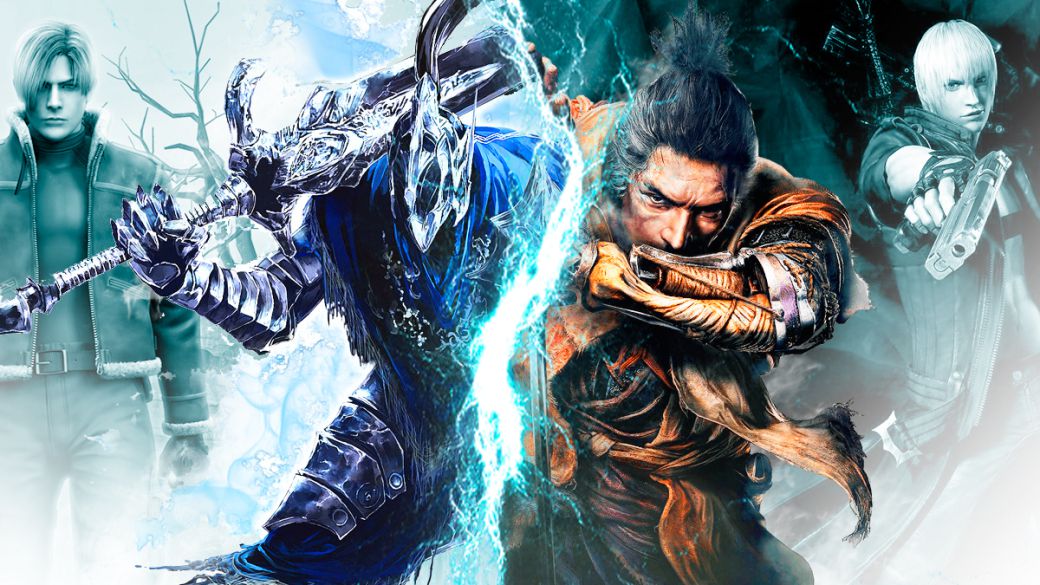
With the remake of Demon’s Souls, a cyclical debate about difficulty, accessibility and author intent is rekindled. We recall its origin and explore some related variables.
At its premiere in 2002, The Elder Scrolls III: Morrowind was not only a high-quality action RPG, capable of showing new possibilities for the genre in the open world and reaping almost unanimous success among the press and the public. It was also the first installment of the saga with a console adaptation (Xbox), where a good port took shape and began a trajectory that would define both the future of Bethesda and that of other companies specialized in role-playing. Although somewhat crude in animations and combat, Morrowind offered great freedom when exploring, accepting missions from different guilds and factions, developing the physical and social capacities of our character or adjusting the level of difficulty using a slider with multiple values. , adapting to many player profiles and leaving them wanting more.
When developing the next installment, Xbox 360 occupied a more important position both when it came to taking advantage of its hardware and adapting the interface to the command, being Bethesda’s objective, in addition, to accompany the console in its launch – an objective that it did not achieve for a few months -. Over time, Oblivion would also end up coming to PlayStation 3, but long before that, and seeing the growing interest in the franchise, Sony moved to have its own “Elder Scrolls”: From Software, a more humble, but experienced Japanese company mixing the role in first person with medieval fantasy (in Japan, King’s Field IV had been released shortly before Morrowind), she was the chosen ally for the task. And although the result would end up being quite different from what was expected, it also redefined the panorama of action RPGs, also stimulating a debate on difficulty that resurfaces periodically and today we will explore including – but not limited to – From’s work.
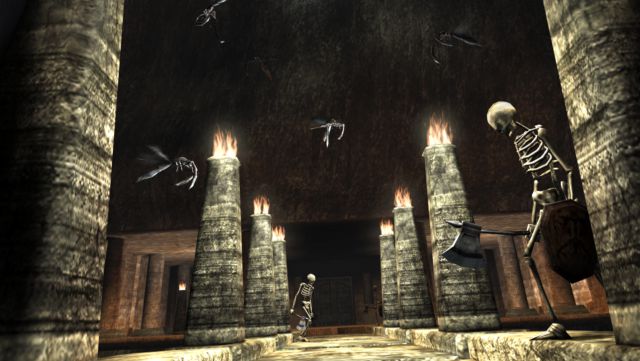
Difficulty of 25 and 10,000 pesetas
It is not possible to speak of difficulty in video games without treating its origin as a necessity to counteract the limitations in both design tools and storage space, as well as incentivize replay in arcade machines that collected an extra coin for each attempt to continue progressing or return to improve scores that then showed our initials to the rest of the players. However, while often responding more to a commercial advantage than an artistic expression, it required a considerable amount of planning and talent to create games whose level of demand invited to keep trying rather than producing the opposite effect. After all, if the player considered the game in question to be “unfair,” they would soon stop tossing out coins.
As might be expected, this notion of “fairness” is not a mathematically quantifiable element, but rather a matter of perception that varied from player to player – and continues to do so decades after the arcade boom – although developers could greatly condition it. calibrating aspects such as control precision (response as immediate and constant as possible so that the player stops thinking in terms of buttons and does so in terms of actions), clarity in visual design (video games are like a language with names and verbs and, as such, they should be organized in a logical and orderly way, not confused like a dialogue where several interlocutors overlap) or through acceptable reaction times (if we detect the beginning of the animation of an attack, we should be able to avoid it before completion). It is a fine line that countless games have traveled to one side or the other, sometimes zigzagging.

With the gradual increase of the home market – particularly that of consoles – the industry moved from a model where we paid for each life to another where we bought the complete game to give it unlimited uses, although the impact was not immediate and the arcade design philosophy it remained in force for years. Sometimes in the form of ports, many others through unreleased games that, despite being created for the living room, could be completed in the course of an afternoon. Titles like Super Mario Bros., Castlevania or Ninja Gaiden could still be completed in less than an hour, or even less than half, although it was not a realistic prospect for a novice player. This theoretical half hour was the final result of a long process of learning and practice, becoming familiar with the controls, the routines of each type of enemy, the intricacies of the levels and developing our own techniques or sharing advice with friends in the pre-internet era. .
Again, although it could have its origin in limitations outside the studies, the capacity of each of them to create stimulating experiences – and not only difficult ones – marked the differences. Challenges developed skills and skills created satisfaction, even if progress was slow, as long as it was perceived as a personal triumph and not a product of chance or factors outside the player. Designing with that in mind was an art in itself, and it implied taking into account not only the requirement as a specific requirement at a specific time, but as a staircase that led step by step, challenge by challenge, to an unattainable point when starting out. the game. It is commonly known as the difficulty curve: the ability to maintain the player in an intermediate point of tension for a long time, avoiding both the boredom of tasks that are too easy and the frustration or even the anxiety produced by the most difficult ones.
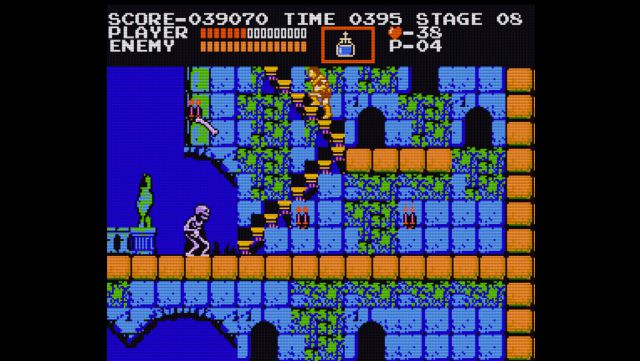
Typology and modulation
It goes without saying that “difficulty” as a term encompasses more than one meaning and varies by context. The fact that video games are an interactive medium does not only mean that the player participates in them actively, it also means that this two-way relationship can take different forms and, consequently, require different types of skills. In this way, for example, we can classify as “logical difficulty” the need to assimilate and properly apply the rules of the virtual world (graphic adventures revolve entirely around this), as “tactical difficulty” elaboration of optimal strategies (with a view to the medium-long term in genres such as RPGs), such as “spatial difficulty” to the ability to orient and memorize in non-linear levels (hello, metroidvanias) and as “mechanical difficulty” to skill in executing actions through the control interface (which is not reduced to combat and can focus on the motor aspect, see pinpoint precision platforms such as Celeste).
These competencies can be intertwined and complemented, leaving the studies to choose more in one direction or another depending on the type of proposal they want to build. Thus, while both the first Castlevania and its sequel posed demanding mechanical challenges, in Simon’s Quest, in addition, Konami decided to push the logical character, with requirements to progress more cryptic than going from point A to point B or defeating bosses. Combining different types of challenges can make a game more challenging, but it also requires more skill to balance them: just as combat requires fine-tuning aspects such as control, visual clarity, or response margins, challenges of an “intellectual” nature require take care of facets such as the correct exposure of the information and the sensitive adaptation to a reasonable context. Something that Simon’s Quest was hardly a good example of, with obtuse puzzles that practically required strokes of luck or consulting guides. Although it finds a positive counterpart in another Konami saga that also allows us to introduce the concept of “modulation”: Silent Hill.
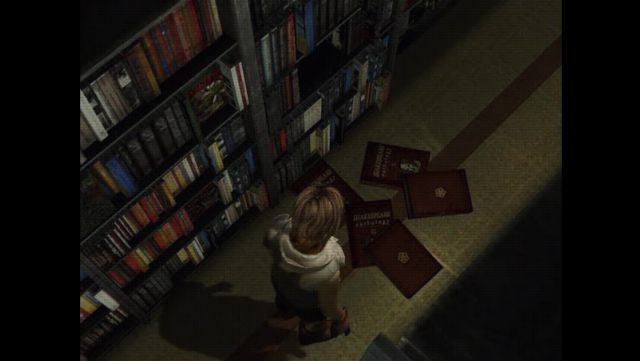
We can use modulation to refer to the use of different types of tools, whether provided directly by the developers or initiatives by the players themselves (non-obvious uses of mechanics, picaresque, exploits), to alter the difficulty. In their most traditional form, those proposed by developers, take the form of modes such as the classic “easy”, “normal” and “difficult” or other more creative names. On paper, it’s a good way to tailor the game to different player profiles – not just based on sheer skill, but also on how much time they want to spend on each full game. In practice, its implementation is another element that requires additional planning and, in many cases, it can be solved with both advantages and disadvantages.
The case of Silent Hill that we anticipated is interesting because some of its deliveries (2 and 3) implemented modes that allowed adjusting the difficulty of the puzzles independently of combat, something that required the studio to create different clues and solutions for the same puzzles . It’s a brilliant solution because not only does it allow you to modulate two types of difficulty separately, but it also invites players to play more than one game to see different variants. Something similar happened with FPS like GoldenEye, Perfect Dark or the TimeSplitters saga, where the modes increased the hardness of the enemies, but also added new objectives to the levels, making the lower difficulties not only a shortcut to easily finish the campaign, but also “workouts” to familiarize yourself with level design before returning to overcome rethought challenges.

The problems of sponges and semantics
The vast majority of modulations raised by the studies, however, tend to focus on readjusting the mechanical demands, especially those related to combat, although within this there are also important distinctions. Halo, for example, became famous largely for the implementation of variable routines in artificial intelligence, causing that beyond the strictly numerical factor, aspects such as group attack dynamics or the instinct of self-preservation changed perceptibly. of enemies. Of course, it is hardly the norm, since a meticulous implementation of this class of routines implies programming and testing several games in parallel, which ends up leading to the most common simple changes of values and, in many cases, the syndrome of the bullet sponges – Enemies that test stamina rather than dexterity by simply offering more lively behavioral replicas.
It is something that in some cases, however, can be beneficial. Devil May Cry, for getting out of shooters, also resorts to increasing life, but in a more precise way – in bosses – to not only test the player’s resistance, but also the knowledge and mastery of the mechanics of their own combat: entirely optional on low difficulties, managing the increase and redemption of the meter that activates the devil trigger (Dante’s ability to temporarily transform into a demon) drastically reduces the duration of fights. In a case like this, therefore, the intention is not to punish the player who chooses the difficult difficulty and tries to make his way through it based on brute force, but to reward that player who adds a better use to his dexterity with his hands. tactician with the head.
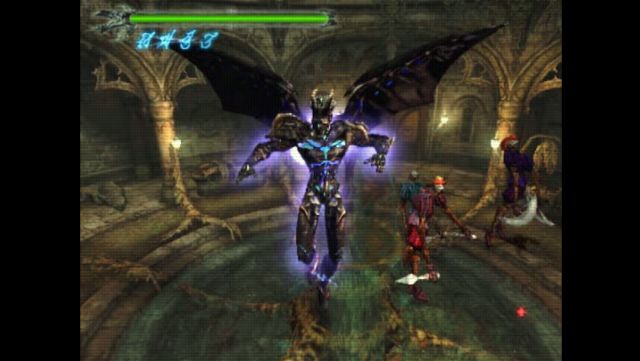
Tangential, but related, is a problem of a semantic nature that can be associated with this class of modes. And is that terms like “easy”, “normal” and “difficult” by themselves do not have a consistent meaning, they depend on a context that varies from game to game. The veteran who returns to a saga knows what to expect, but this is not always the case, nor does equivalent modes on a theoretical scale necessarily mark a practical equivalence in difficulty. In that sense, a success in recent times is to accompany the description modes (the remake of Resident Evil 2 expands the selection of the original and clarifies that, in addition to the changes in the hardness of the enemies, the easiest one has assisted aiming and regeneration of life, while the most difficult requires using tapes to save), although that does not prevent companies from giving it questionable use (the recent Pikmin 3 Deluxe renames the only Wii U mode as “difficult” and does not clarify that “normal” is actually easy).
Dynamic difficulty and level scaling
Speaking of Resident Evil 2, Capcom’s new classic is also a good example of a type of cloaked modulation that some games use to accommodate the player: known as dynamic or adaptive difficulty. Although the characteristics of the extreme modes are immovable (the easy mode will always have advantages such as the regeneration of life and the hard mode will require tapes to save), in the intermission, values such as the life of the zombies or the Critical probability changes up or down depending on the player’s performance. It is a recurring practice in the saga, which dates back to Resident Evil 4 – where the studio even removed enemies after several attempts – and serves to promote that constant tension that we talked about before (the internal mechanisms work so that it is never too easy and boring, or too difficult and frustrating).
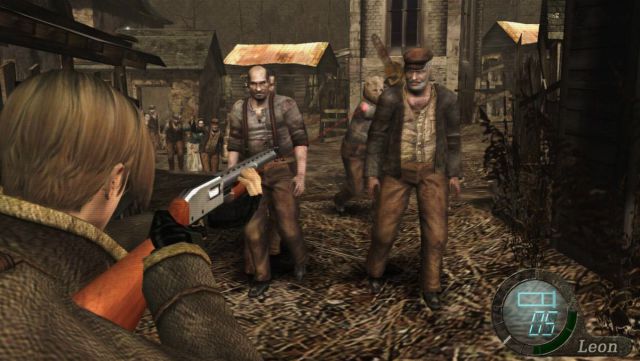
A similar principle is applied by Mario Kart when it comes to assigning better objects to stragglers, and also other speed games without items to prevent the distance between vehicles from increasing too much and racing loses intensity (a phenomenon known as rubber banding). This naturally raises another dilemma, since, manifestly or not, the player loses control over modulation. The challenge fits him rather than the other way around. Although if applied in a subtle way, it is something hardly problematic because most do not even perceive it and continue to experience the satisfaction of overcoming the chosen mode without changing it, a direct option that many games also offer when chaining several deaths (here it is worth noting Smash Bros. Ultimate as a hybrid, since the difficulty of its arcade mode uses a scale with decimals that changes visibly based on performance).
Of course, these kinds of tricks are more difficult to implement when the scale and possibilities are increased. Over time, games of just one hour not only gave way to eight or ten hours, but also to open worlds where the player could be several dozen prowling. This obviously requires other planning, both in terms of the content itself and the difficulty itself. That is why many RPGs resorted to a system, level scaling (level scaling), aimed at constantly maintaining that balance that avoided the easy and difficult extremes. Thus, it didn’t matter whether a level 10 character went to zone B or C rather than A, the enemies would adjust to offer an appropriate challenge and the player was not deterred from exploring them. A logical theory that, like everything else, has historically had better and worse implementations. Which brings us, finally, back to Elder Scrolls.
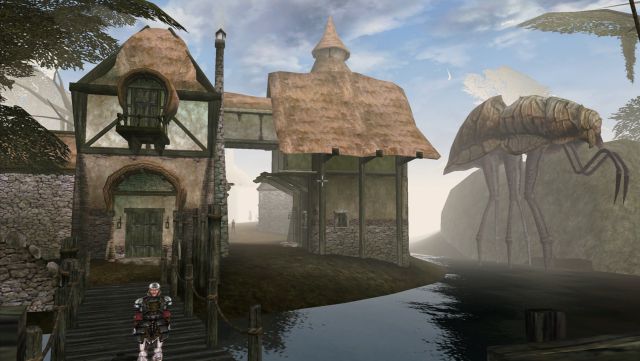
As we said at the beginning, Morrowind implemented a bar for the player to regulate the general difficulty: the starting point, located in the center, was 0, but it could be raised or lowered up to 100 points in any direction. These changes had clear effects on combat, although even minimally they did not end up trivializing the experience for several reasons: first, because the game also required another kind of skill to orient itself from dialogue and diary notes (there was no magic GPS that the position was indicated and the map was only drawn by exploration); second, because it gave great importance to attributes beyond attack or defense (at -100 our blows were devastating, but could miss even a foot from the enemy); and third, because the level scaling was very moderate and preserved both clear hierarchies (a bandit was always going to make a difference with respect to a rat, and a trained soldier with respect to a bandit) and manually adjusted peaks – the Red Mountain should be, And it was, more intimidating.
Four years later, Oblivion arrived with next-gen graphics, magical GPS, and a more drastic interpretation of the system: everything from enemy types, to attributes, and even equipment, changed as the player leveled up. As a result, no corner was really dangerous – unless we raised the difficulty bar and all were – minor creatures such as rats or crabs hardly illustrated the evolution of the character over the hours, bandits ended up populating the forests with legendary equipment and even unforeseen imbalances could appear as a character leveled up with non-combat attributes (stealth, locksmith, etc.) because it didn’t discriminate against them. The inconsistencies were so glaring that, for the next installment (Skyrim), Bethesda went back and implemented a much more moderate and localized system. And other later games like The Witcher 3 or Assassin’s Creed: Odyssey decided to add an independent scaling selector to the difficulty selector.
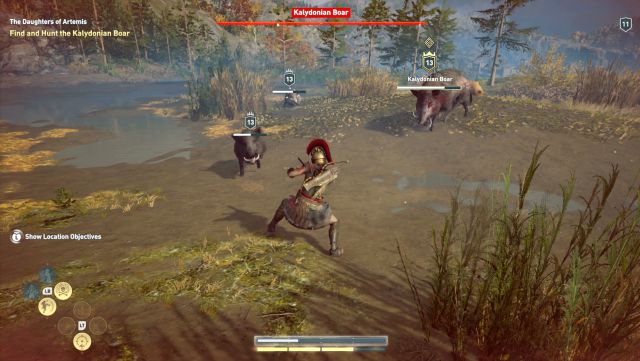
Demon’s Souls: Back to the Origins
Of course, none of the problems discussed prevented Oblivion from receiving better scores, selling more millions of copies and winning more awards than Morrowind, so Sony was still waiting for the From Software replica. However, development was complicated, prototypes were unsuccessful and the project was on the verge of cancellation. It was then that Hidetaka Miyazaki – then director of the Armored Core series – saw a unique opportunity to experiment with his favorite genre: dark fantasy. With the approval of a From more attentive to other projects and almost total ignorance of Sony, the creative discarded the first person and the open world. He knew they couldn’t compete with Bethesda on their own terms, so he rethought Demon’s Souls as a return to the RPGs of yesteryear. A more demanding game, but where the player saw his efforts rewarded with significant progress and discoveries.
As he himself would clarify in later interviews, the objective was not simply to increase the difficulty by the mere fact of raising it, but to pursue that feeling of achievement that happened to him. One that could not be “tricked” by changing modes or lowering bars, but by adapting to modulate it with the game’s own tools. It went against almost all contemporary conventions, using severe penalties to put players into a constant state of hyper alertness even when there were no enemies in sight. Preventing leveling up until completing the first Boletaria challenge to make the player not rely only on statistics, but internalize the use of systems such as resistance and parries. To appreciate the impact on attack, defense and speed of each change in equipment. Let him look for shortcuts that would trade exploration for progress even if each death returned to the starting point. Treasure resources like healing herbs or firebombs. And that he learned to live with the permanent loss of the souls that served as currency and experience. Because fear invited cowardice and Demon’s Souls required taking risks.

A self-confessed fan of works such as the original Zelda or ICO – a game that motivated him to pursue a career in the medium – Miyazaki also wanted to build a contemplative experience, with mysteries. It wasn’t just about the combat demanding more, it was also about dispensing with mission markers, maps with a thousand dots, or even letting players decipher mechanics on their own without dedicated tutorials, including a cryptic inversion of scaling that made the game more difficult. die repeatedly. Although it was not indiscriminate sadism, and the game left advantages such as a hint system that users could share, the invocation of other players to help against bosses – in exchange for having the game open to enemy invasions, yes – or the possibility of jumping at pleasure between several levels to try your luck in another if one chokes us more than necessary.
It was a litmus test in an age where most games opted for comfortable warmth. A test that Sony did not pass, as Shuhei Yoshida himself would later admit. Even though they owned the license, they refused to distribute the game outside of Japan: it had little or no Oblivion, the reception at events like the Tokyo Game Show was a disaster, and initial sales didn’t even meet low expectations. After years with Dark Souls even in the soup it is easy to forget it, but the saga was rescued from the most extreme niche by fans who imported it. As it was in English and had no regional blocking, forums, streams and some western Reviews began to echo that devilishly difficult game, but at the same time addictive because every progress mattered. In a master move, Namco not only took over its distribution in Europe, it also produced a sequel that would not be a sequel, but a brand new IP. And the rest, as they say, is history.

Sekiro and difficulty as an artistic expression
Of course, the story continues with Dark Souls enshrined as one of the most influential sagas of the decade, Sony returning to From Software’s doorstep to produce Bloodborne and Bluepoint Games remaking the no-longer-so-niche Demon’s Souls to back the release. PS5 as the star game. Still, Miyazaki’s trajectory has not been without controversy, almost always a product of the same difficulty that put him on the map in the first place. It’s a theme that comes and goes like the tides, although it shook the shore in a particularly hectic way last year with the premiere of Sekiro: Shadows Die Twice. This time produced by Activision, the game maintained the good streak in sales, and with them more people joined a debate that this time, in addition, found some fans of Souls themselves something out of place by reducing or even eliminating role-playing elements , the variety of builds and online invocations.
The renewed demand opened and mixed fronts on difficulty, accessibility and author intention. The first two often came intertwined and confused, so it is worth differentiating accessibility, or inclusiveness, as the series of measures dedicated to players with some type of visual, hearing, cognitive or motor disability can overcome impediments that for the majority of players are not such. It is an aspect apart from the difficulty per se that, luckily, more and more companies are taking into account, offering from options to increase subtitles, add extra indicators to the interface or change the operation of buttons to make compatible games with specialized hardware. In that sense, Sekiro has room for improvement, although it offers a friendlier entry point than its predecessors both due to the presence of tutorials that explain each mechanic in detail and a character that allows you to practice the techniques in a safe environment.
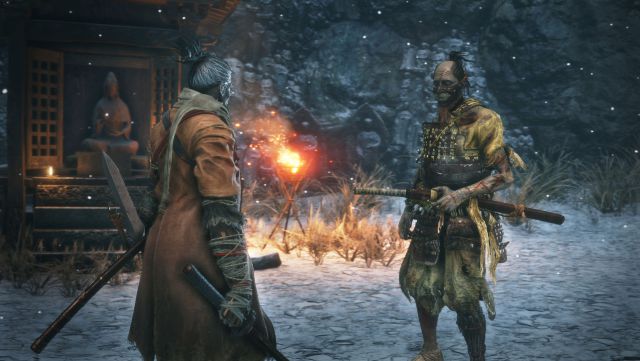
This, however, tended to be a secondary factor in the controversy. Because even if Sekiro wasn’t overly inclusive, he still fell into a general trend of a homework medium. What multiplied the debate was the fact that many players perfectly adapted to other games of the genre without the need for extra adjustments also considered that the game raised barriers too high for them. To be able to enjoy the world created by From without having to invest time that they did not have or develop a skill that might not be within their reach. It was – and still is – a debate with grays that, of course, often touched the extremes and led to the narrative that the Souls perpetuated an elitism by denying easy mode. But that, even accepting it as true —whether in a marginal or significant percentage—, is still a matter for the community. And it is not from the community, but from From, who depends on including this mode.
In early 2012, months before the first Dark Souls made the leap from consoles to PC, British studio The Chinese Room released a game called Dear Esther. The title had its origins as a mod created from the Half-Life 2 engine, but it was at its commercial launch that another controversy, quite different, arose around the limits of the “video game” as a medium: with no more mechanics than walking, no more objectives than to reach the end of the road while listening to the stories that piece by piece made up the narrative, the work was a key turning point in establishing the genre now known as the walking simulator. One that, like the others, has evolved, contributed new ideas in the staging and gameplay, which sometimes also sneaks among the most revered games (Gone Home, The Stanley Parable, What Remains of Edith Finch, etc.) , but that still continues to be accompanied by a certain stigma for its mechanical simplicity.

This small detour leads us down another path to a common idea, which is that, although it is reasonable to say that video games, as a medium, should be for everyone, that is not the same as saying that all games should be for all players. because their differences and risks arise their identities, their ability to materialize both a specific creative vision and appeal to a specific sensitivity. If Dear Esther tried to tell the same story across a larger island, where the studio could implement and take advantage of platform mechanics, the result could be defined as a more elaborate product, perhaps also more “fun”, but it would lose the solemn aura that it has in its present form. In the same way, if Sekiro made the mastery of mechanics such as the management of the stance bar or the timing of the Mikiri counterattack optional for each player to use or ignore them to their liking, the resulting experience would also be different.
The aesthetic function, the product of the talent of the people involved in the design of characters and levels, or in writing storylines, could be enjoyed on its own, but without the playable tension it would be like listening to the triumphant musical piece of the climax of a movie without see accompanying images. In fact, soundtracks can often be purchased separately even if they were composed for a specific context, but this gives them another meaning, complements them to create a symbiotic relationship. And it is precisely that relationship, which elevates both things by association, that Miyazaki was looking for. Because drawing and then building with polygons a monstrous creature would lose impact if the only monstrous thing was its appearance. For this reason, From games do not exist as mere virtual worlds in which to locate the exploits of Lobo, a Bloodborne hunter or a Dark Souls knight, but those of the player. Decades after the games of 25 pesetas and the cartridges with one-hour games, there is still value in the difficulty, one that responds to the artistic function.
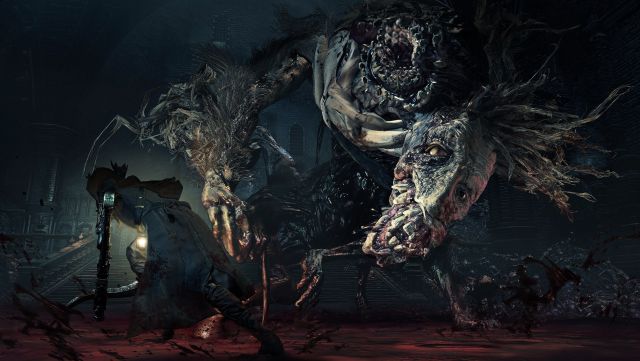
Determination: The Psychology of Difficulty
Before concluding, it is worth emphasizing that difficulty is a video game tool with the ability to push players into states unattainable by other means. Although this sometimes translates into frustration, pulling ourselves out of the comfort zone with no option to adjust modes or bars is as much a decision that limits versatility as it is a window into a new kind of introspection. Persisting in difficult games leads us to improve skills, to develop lateral thinking to seek alternatives and, in case of success, to improve self-esteem. It is inevitable that some will fall by the wayside and authors like Miyazaki know it as well as those who ask for an easy way. But the fact of building a game around an equal challenge for all invites both communal celebration in case of triumph, and collaboration in case of doubt or failure.
Neither the player with the world record for a speedrun, nor the one who decides to replace the controller with the Guitar Hero guitar or the Donkey Konga bongo drums to test themselves got to that point without missing, losing and frustrated along the way. And in some of those moments, they surely wondered if it was worth it too. Why have a bad time if video games are an evasion method that, as a rule, seeks the opposite. For this there is no single answer because, just as each game is unique, each player is also unique. But something difficult to dispute is that the demand of the task increases the feeling of achievement and, consequently, the propensity to accept new challenges. Es algo que también se aplica en otros ámbitos, como cuando aprendemos a tocar un instrumento o entrenamos para superar una marca deportiva. Al igual que un músculo que mejora su rendimiento con la práctica, la determinación es una cualidad que se desarrolla y se transfiere de juego a juego, o incluso a otras facetas de la vida, donde también es necesario lidiar con el fracaso para triunfar.

Privar de un modo fácil, un atajo hacia el objetivo que no requiera tocar todas las notas o empezar la carrera desde la misma línea de salida que otros atletas, siempre será controvertido y nuestra intención aquí no es demostrar lo contrario. Pero a veces, aunque solo sea a veces, la falta de alternativas es el empujón que necesitan algunos para ver hasta dónde son capaces de llegar. Incluso aunque no sea hasta el final, quizá sí sea mucho más lejos de lo que imaginaban antes de empezar.
